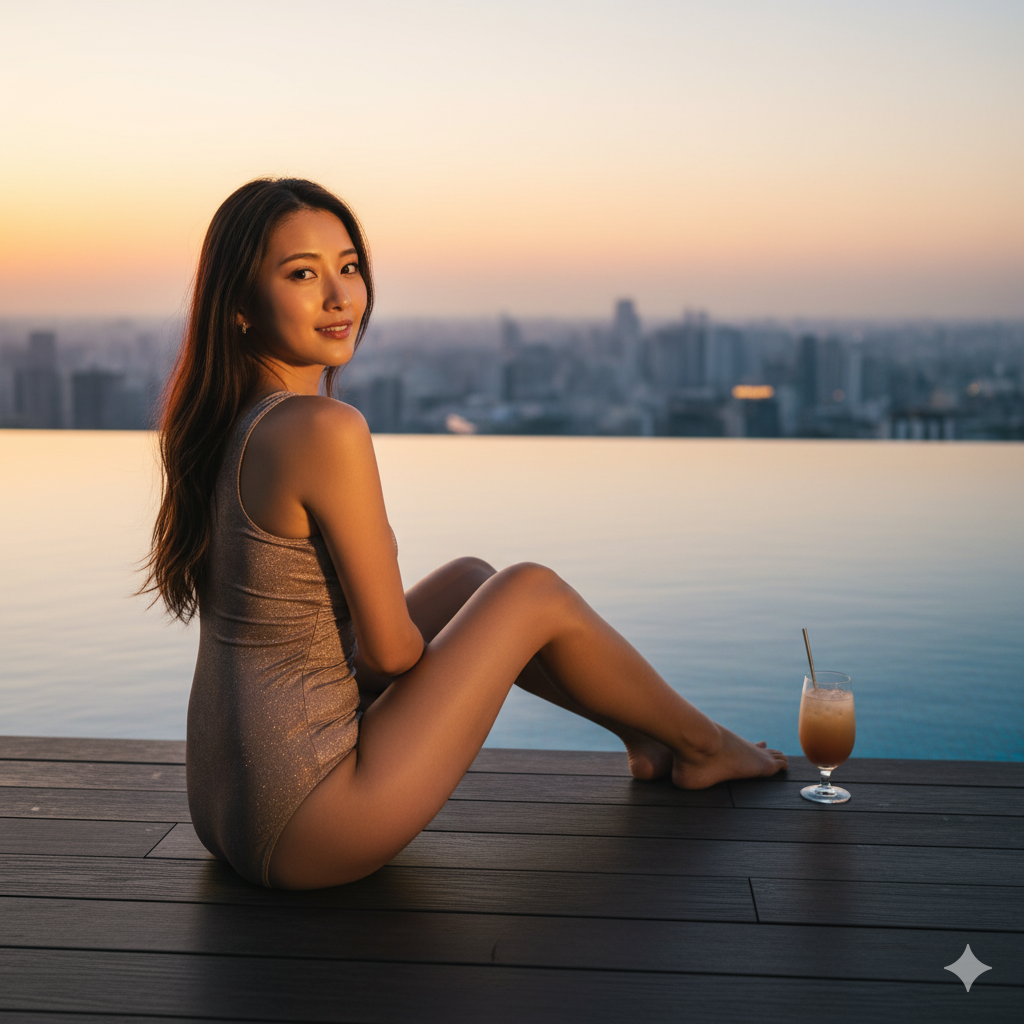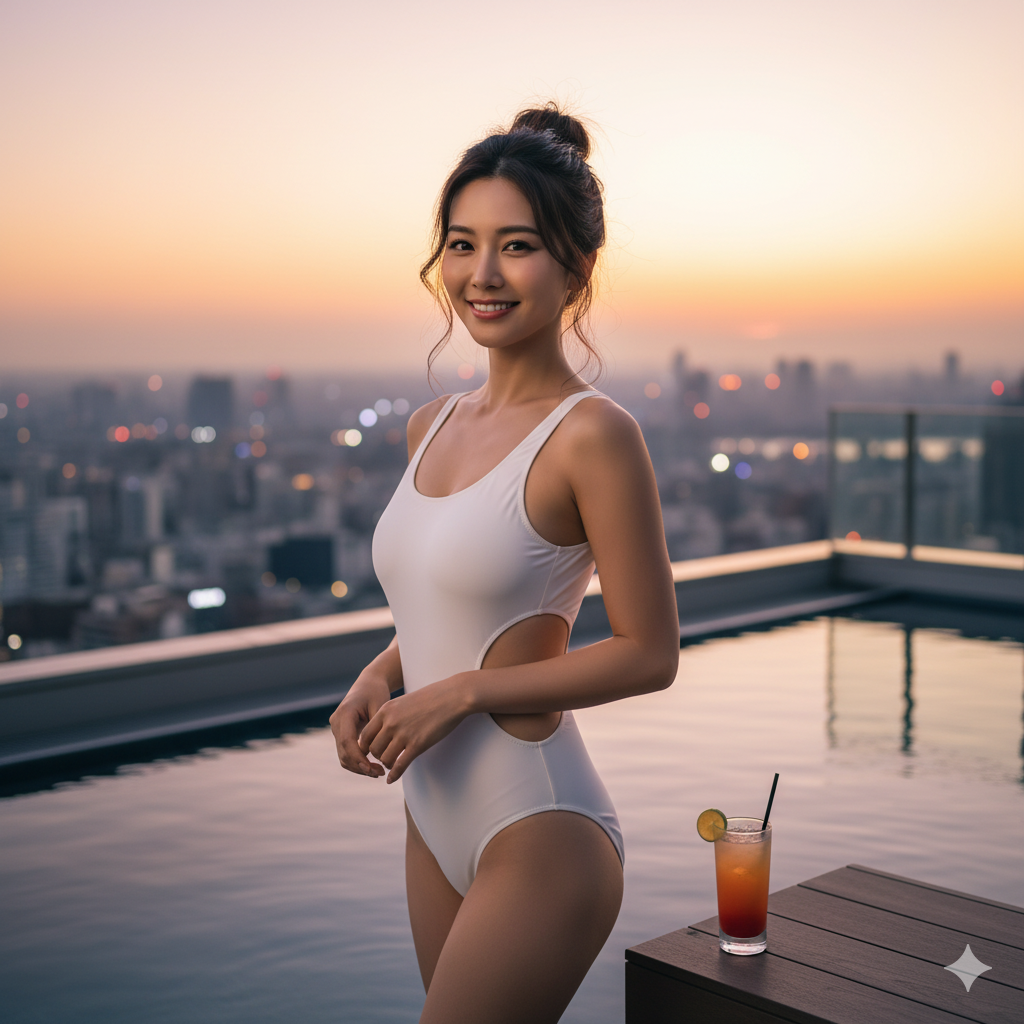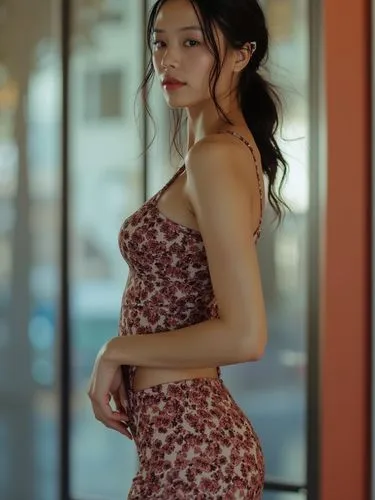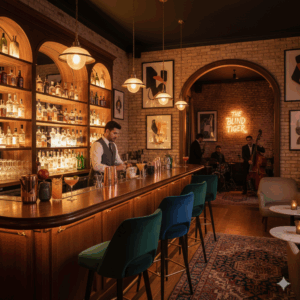In contemporary Tokyo, “hidden bars” are small, design-driven spaces that use lighting, narrow corridors, and quiet signage to frame a sense of discovery. Many are counter-only; others place a lounge behind a discreet stairwell or basement door. As a social format, these venues emphasize curated intimacy: concise menus, bartender-led recommendations, and time-boxed stays (60–120 minutes). Services range from classic cocktails and absinthe rituals to omakase style tasting flights. Guests are typically 20s–50s, a mix of locals, expats, and visitors. These bars are embedded in the night grid of Shibuya, Shinjuku, Ebisu, and Ginza—close to major stations and last trains—making them a compact way to sample urban nightlife culture.
hidden bars tokyo can mean true speakeasies with masked entrances or simply hushed, second-floor counters away from the crowds. Below, you’ll find a step-by-step way to choose areas, book seats, estimate prices, and behave like a considerate guest—plus direct links to official sources only.
1. Overview: Where should you start in hidden bars tokyo?
2. Top Areas & Access: Which neighborhoods and how to reach them?
3. Prices, Time & Eligibility: What will you pay and how long can you stay?
4. Venue Types & Services: What styles of “hidden” are common?
5. Reservations, Etiquette & Useful Phrases: How to book and behave?
1. Overview: Where should you start in hidden bars tokyo?

Conclusion → Numbers → Source: Tokyo Metro and JR hubs connect these neighborhoods in under 10–15 minutes of train time; use official route maps to plan hops. See Tokyo Metro station info and JR’s Shibuya page JR East (Shibuya).
1-1 Area overview
Shibuya and Ebisu concentrate new-school cocktail rooms and inventive speakeasies (e.g., The SG Club, Bar Trench), while Ginza skews classic and high-touch (e.g., Bar High Five, Mixology Salon). Shinjuku Golden Gai is a maze of tiny upstairs rooms with 8–15 seats each—more casual, more conversational.
1-2 Venue distribution
Ebisu’s cluster sits within a 5–8 minute walk of the station’s west exit; Ginza’s counters are distributed around Chuo-dori within a 5–10 minute radius. Golden Gai compresses ~280 bars into a few alleys; the official association provides maps and event notices: Shinjuku Golden Gai (official) / Golden Gai Association.
1-3 Typical session flow
Small counters commonly seat you, present a short menu (or ask preferences), recommend one cocktail, then check in for a second order. Omakase counters (like Gen Yamamoto) run a fixed sequence; plan 60–120 minutes total before moving to the next stop. See pricing/time details in Section 3 with official menus and booking pages.
2. Top Areas & Access: Which neighborhoods and how to reach them?

2-1 Shibuya: creative and layered
Shibuya’s SG Group flagship places “Guzzle” (casual) upstairs and “Sip” (dim, club-like) below; there’s also a cigar lounge. It’s a good first stop from Shibuya Station’s many lines. Conclusion → Numbers → Source: It sits in Jinnan with multiple sub-spaces; phone 050-3138-2618; awards include Asia’s 50 Best placements—see The SG Club official. For station details, see Tokyu (Shibuya Station) and JR East (Shibuya).
2-2 Ebisu: compact cluster near west exit
Ebisu is ideal for bar-hopping: Bar Trench, Tram, and related sister spots are within minutes. Conclusion → Numbers → Source: Trench has earned global rankings since 2014; locations are a short walk from JR/Metro Ebisu—see the operator’s site for Trench Small Axe (Trench) and for Tram details Small Axe (Tram).
2-3 Shinjuku & Ginza: micro-bars and mastery
Golden Gai in Shinjuku condenses hundreds of micro-bars with varying cover policies; Ginza hosts world-renowned counters like Bar High Five and tea-based Mixology Salon. Conclusion → Numbers → Source: Golden Gai’s official map lists ~280–300 venues—see Golden Gai official. For specific bars: Bar High Five, and Mixology Salon’s shop page in GINZA SIX GINZA SIX (Mixology Salon).
Table 1: Venue Types & Base Fees
| Venue Type | Typical Fee | Session Time | Area (JP Link) |
|---|---|---|---|
| Hidden lounge near Shibuya (The SG Club “Sip/Guzzle”) | ¥1,400–¥2,200 / cocktail (typical) | 60–120 min | Official website (Japanese) |
| Absinthe/herbal bar cluster (Ebisu: Trench / Tram) | ¥1,300–¥2,000 / drink (typical) | 60–90 min | Official website (Japanese) |
| Ginza classic counter (Bar High Five) | ¥1,800–¥2,400 / cocktail (typical) | 90–120 min | Official website (Japanese) |
| Omakase cocktail tasting (Gen Yamamoto) | ¥7,300–¥10,000 / course (4–7 cocktails) | 70–120 min | Official website (English/Japanese) |
Fees are indicative from official pages where available; tasting course prices come directly from Gen Yamamoto’s menu. Use each venue’s link to confirm current charges and service styles.
3. Prices, Time & Eligibility: What will you pay and how long can you stay?

3-1 Typical cocktail and course pricing
Conclusion → Numbers → Source: Gen Yamamoto lists courses of four to seven cocktails at ¥7,300 / ¥8,300 / ¥9,300 / ¥10,000 (tax included). See Gen Yamamoto (menu). Mixology Salon notes a cover charge of ¥880 and recommends reservations; see the official GINZA SIX shop page and their booking page: GINZA SIX (Mixology Salon) and TableCheck (Mixology Salon).
3-2 Time systems, covers, and seat limits
Conclusion → Numbers → Source: Some bars run seatings in 2-hour blocks or specific time slots. BenFiddich operates a 19:00 / 21:00 / 23:00 three-slot system with reservations opening on the 20th of each month; the bar is tiny (~15 seats). See TableCheck (BenFiddich) and the official info page BenFiddich. For Ebisu’s Tram, the operator notes service policies and booking options; details via TableCheck (Bar Tram).
3-3 Age & language
Bars in Japan serve ages 20+ only; some explicitly refuse minors after 17:00/18:00. Mixology Salon states no under-20s after 17:00 and a cover of ¥880; see their booking policy. Many high-profile bars handle simple English; menus may be bilingual in Shibuya/Ginza.
Table 2: Access & Hours
| Station | Walk Time | Hours* | Area (JP Link) |
|---|---|---|---|
| Shibuya (JR/Metro/Tokyu) | 5–10 min to Jinnan bars | Varies by venue | JR East (Shibuya) |
| Ebisu (JR/Metro) | 3–6 min to Trench/Tram | Open nightly; late | Official website (Japanese) |
| Ginza (Metro) | 5–10 min to High Five/Mixology | Evening-late; some close Sun | Official website (Japanese) |
| Shinjuku (JR/Metro) | 8–12 min to Golden Gai | Evening-late | Official website (Japanese) |
*Always check each venue’s page; many counters adjust hours for events or seatings.
4. Venue Types & Services: What styles of “hidden” are common?

4-1 Discreet entrances & layered spaces
Many bars hide in plain sight—second floors above ramen shops, basements behind simple nameplates. The SG Club splits casual (Guzzle) and moody (Sip) zones; a third lounge pairs cigars and cocktails. Conclusion → Numbers → Source: The venue details and awards are listed on the operator’s official profile: The SG Club (official).
4-2 Absinthe & herb-forward salons
Ebisu’s Trench and Tram showcase absinthe fountains and herb liqueurs—this is a distinct niche with ritualized pouring and glassware. Conclusion → Numbers → Source: Small Axe notes daily late hours and no table charge for Tram; Trench carries international accolades since 2014. See Trench and Tram.
4-3 Omakase cocktail counters
Instead of choosing à la carte, you’ll drink a seasonal sequence tailored to Japanese “shiki” (seasonality). Conclusion → Numbers → Source: Gen Yamamoto publishes clear course pricing (¥7,300–¥10,000 for 4–7 cocktails). See Gen Yamamoto (official).
Table 3: Reservation & Eligibility
| Method | Lead Time | Eligibility | Official (JP Link) |
|---|---|---|---|
| Online reservation (fixed seatings) | 2–14 days ahead | 20+; small parties only | BenFiddich (TableCheck) |
| Online/phone (cover applies) | Same day–7 days | 20+ after 17:00 | Mixology Salon (TableCheck) |
| Walk-in or online (cluster bars) | Same day | 20+; some smoking | Bar Tram (TableCheck) |
Always read each booking page carefully—seatings, cover charges, and arrival grace periods are enforced.
5. Reservations, Etiquette & Useful Phrases: How to book and behave?

5-1 How to reserve (and cancel) correctly
Conclusion → Numbers → Source: BenFiddich opens reservations on the 20th each month with 19:00 / 21:00 / 23:00 seatings and strict lateness rules—see TableCheck (BenFiddich). Mixology Salon states ¥880 cover, 2-hour seating, and no under-20s after 17:00—see their policies. For absinthe bars in Ebisu, check Tram’s booking notes (age limit, smoking) via TableCheck (Tram).
5-2 Etiquette basics
- Speak softly; counters are intimate.
- Order one drink per person; don’t nurse water only.
- Ask before filming; never photograph other guests.
- Respect time slots; the next seating starts promptly.
- Cashless is common, but carry a small cash buffer.
Neighborhood etiquette: Golden Gai isn’t a theme park—treat alleys as residential-adjacent and follow local rules. See the association guidance via Golden Gai (official).
5-3 Useful phrases (plain English → Japanese)
- “Two seats, please. We have a reservation.” → 「予約があります。2名です。」
- “Do you have seats for one/two?” → 「1名(2名)入れますか?」
- “Bartender’s choice, citrusy but not sweet.” → 「おまかせで、柑橘系・甘さ控えめでお願いします。」
- “Is photos okay?” → 「写真は撮ってもいいですか?」
- “We will leave in about 60 minutes.” → 「約60分で退店します。」
6. Summary and Next Steps

Conclusion → Numbers → Source: For a one-night sampler, target 3 venues within walking distance and keep each stay to 60–90 minutes. Use Metro/JR maps to lock in last trains; see Tokyo Metro and JR East (Shibuya). For specific bars, rely on the official operators: The SG Club, Bar Trench, Bar Tram, Bar High Five, and Gen Yamamoto.
Editor’s Recommendation — Why choose SoapEmpire for your Tokyo speakeasy night
First-time visitors often tell us the same story: Tokyo feels limitless until the moment you try to pick an actual door to open. Many hidden bars use minimal signage, run short seatings, or post rules in Japanese only. That’s exciting—until you miss the slot or land somewhere that doesn’t match your vibe. The fix is simple: plan a compact, walkable route; secure one anchor reservation; and keep two flexible options nearby. This is where SoapEmpire shines.
We translate your preferences into a realistic itinerary that balances headline destinations like The SG Club or Bar Trench with low-key micro-bars in Shinjuku Golden Gai. If your goal is a refined Ginza counter or a tea-driven experience at Mixology Salon, we’ll align your times with last trains and advise on covers and service charges. For omakase counters such as Gen Yamamoto, we’ll navigate the course options—four, five, six, or seven cocktails—so you understand pacing and budget before you sit. Our team also prepares simple Japanese phrases for common moments (asking about photos, ordering bartender’s choice) to make interactions smoother for you and more comfortable for staff.
Because SoapEmpire focuses on plain English guidance for nightlife and culture, we describe each venue’s “performance of intimacy” in practical terms: how the room is lit; whether there’s a cover; how long you’ll sit; if the bartender will tailor a drink to a single note like citrus, tea, or smoke. We prioritize official sources and keep every detail current—hours, age rules, booking portals—so you won’t waste time or lose a reservation window. The result is a relaxed, low-friction night where you can simply enjoy the craft and conversation.
If you care about discretion, we’ll choose bars with quieter entrances; if you’re exploring hidden bars tokyo with friends, we’ll steer you to rooms that accept pairs or small groups without sacrificing atmosphere. Either way, SoapEmpire gives you clarity on price bands, walking times, and etiquette so there are no surprises—just great drinks. For reservations or inquiries, please contact us via the inquiry form.
Further reading on SoapEmpire:
Official site ·
Tokyo Night District Basics ·
Osaka Nightlife Zones ·
How to Book in Japan
FAQ — Hidden Bars in Tokyo
1) How much should I budget for a night?
Plan ¥8,000–¥12,000 per person for a three-stop hop: two cocktails at each or one course plus one extra bar. Courses at Gen Yamamoto cost ¥7,300–¥10,000 (see official), while classic cocktails average ¥1,400–¥2,400 at many counters.
2) Do I need reservations?
For tiny or famous counters, yes. BenFiddich opens on the 20th monthly and runs three seatings (19:00/21:00/23:00)—see official booking. Mixology Salon accepts reservations and notes a ¥880 cover—see their policy.
3) Where should I start if I only have one night?
Pick one cluster. For creative cocktails: Shibuya→Ebisu (The SG Club → Trench/Tram). For classics: Ginza (Bar High Five → Mixology Salon). Golden Gai is perfect for spontaneous second drinks—see official guide.
4) Is English okay?
Basic English is common at international award-winners (SG Club, High Five, Mixology). Polite, short requests and the phrases above go a long way.
5) What time should I finish?
Most bars go late, but plan around your last train. Use official Metro/JR pages: Tokyo Metro and JR East (Shibuya).
If you’re interested in visiting any of these places, SoapEmpire offers a 24-hour booking support service for only $10.
Just send the store name, preferred time, and your name (nickname is fine) to:
artistatakuma@icloud.com.
We’ll take care of your reservation quickly and smoothly.
※Reference notes (editor’s note): Hours and prices shift seasonally. Always verify via the official links before you go.

